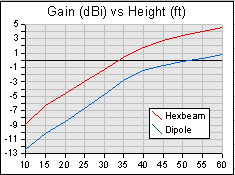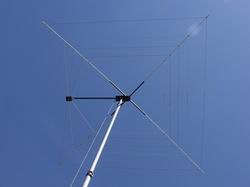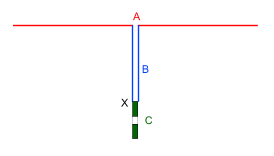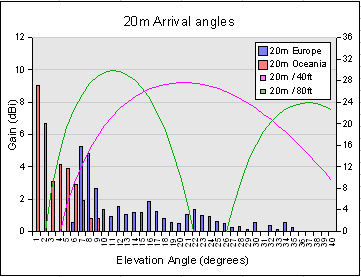Excellent technical reference article by Steve G3TXQ:
A question often asked on the Yahoo HexBeam discussion group is “what is the best height for my Hexbeam?”. It is difficult to answer the question without first understanding what the questioner means by “best”. As with any antenna, height above ground affects the tuning of the Hexbeam, its directivity and its matching; so the height which produces the lowest SWR might well be different from the height which produces best F/B or acceptable Gain.
To illustrate how a Hexbeam’s performance varies with height, a 20m Classic monobander was modelled at 5ft intervals between 10ft and 60ft over Real/Average ground [Results would have followed the same trends had a Broadband Hexbeam been modelled]. The following charts show the results. Assuming that most readers will be interested in the performance of the antenna over long distance paths, the Gain and F/B figures were modelled at a 5° take-off angle. The charts can be used to predict performance on other bands by scaling the height axis accordingly; for example on 10m the height axis would run from 5ft to 30ft.
 Continue reading Classic Amateur Radio (G3TXQ) – Hexbeam Height (Part 1)
Continue reading Classic Amateur Radio (G3TXQ) – Hexbeam Height (Part 1)
2,799 total views, no views today
Please follow and like us:



